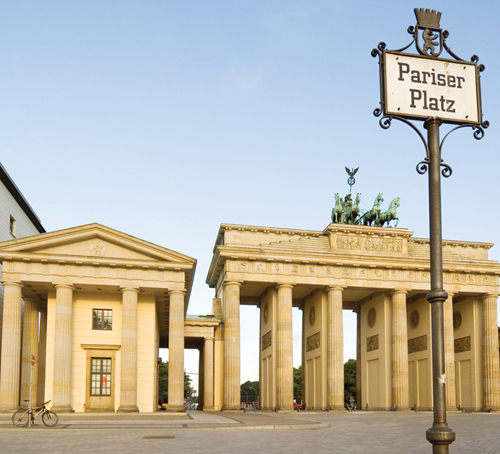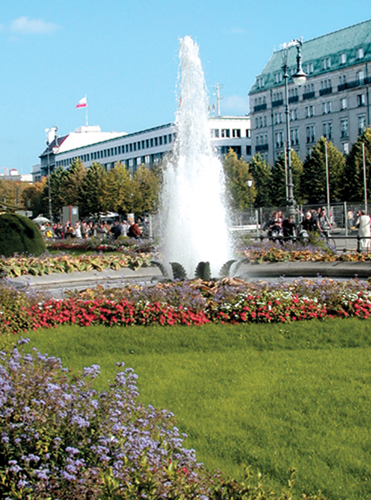The best known of Berlin’s symbols, the Brandenburg
Gate stands proudly in the middle of Pariser Platz, asserting itself
against the hyper-modern embassy buildings that now surround it. Crowned
by its triumphant Quadriga sculpture, the famous Gate has long been a
focal point in Berlin’s history: rulers and statesmen, military parades
and demonstrations – all have felt compelled to march through the
Brandenburger Tor.

The Brandenburg Gate seen from the east
|
One of the best spots for a coffee or a bite to eat in Pariser Platz is Theodor Tucher, a café and restaurant that opens at 9am.
|
|
|
A small exhibition, housed in the northern side wing of the Brandenburger Tor, tells the history of the Gate.
|
|
Top 10 SightsBrandenburger Tor Since
its restoration in 2002, Berlin’s symbol is now lit up more brightly
than ever before. Built by Carl G Langhans in 1789–91 and modelled on
the temple porticos of ancient Athens, the Gate has, since the 19th
century, been the backdrop for many events in the city’s turbulent
history. Quadriga The
sculpture, 6 m (20 ft) high above the Gate, was created in 1794 by
Johann Gottfried Schadow as a symbol of peace. As a model for the
laurel-crowned goddess of peace in the chariot, Schadow used his niece,
who subsequently became famous throughout Berlin.

Hotel Adlon Berlin Completed
in 1997 and now favoured by visiting dignitaries, Berlin’s most elegant
hotel is a reconstruction of the original Hotel Adlon. This legendary
hotel, destroyed in World War II, was host to the rich and famous,
including Greta Garbo, Thomas Mann and Charlie Chaplin . DZ Bank This
modern building, designed by the American architect Frank Owen Gehry,
combines the clean lines of Prussian architecture with some daring
elements. Akademie der Künste The
new building, erected between 2000 and 2005 by Günter Behnisch and
Manfred Sabatke, incorporates behind a vast expanse of windows the ruins
of the old art academy, which was destroyed in World War II. Today it
is an Academy of the Arts and features compelling exhibitions. French Embassy In
1999–2001, an elegant new building was constructed by Christian de
Portzamparc, on the site of the old embassy, which was destroyed in
World War II. Its colonnades and tall windows, a homage to the former
French Embassy palace, are particularly remarkable and worth seeing. Palais am Pariser Platz This
complex by Bernhard Winking, a successful modern interpretation of
Neo-Classical architecture, is slightly hidden to the north of the
Brandenburger Tor. It is worth venturing inside where you will find a
café, a restaurant and a souvenir shop around a pleasantly shaded
courtyard.

Eugen-Gutmann-Haus With
its clean lines, the Dresdner Bank, built in the round by the Hamburg
architects’ team gmp in 1996–7, recalls the style of the New Sobriety
movement of the 1920s. In front of the building, which serves as the
Berlin headquarters of the Dresdner Bank, stands the famous original
street sign for the Pariser Platz.

Haus Liebermann Josef
Paul Kleihues erected this building at the north end of the
Brandenburger Tor in 1996–8, faithfully recreating an earlier building
on the same site. The house is named after the artist Max Liebermann,
who lived here. In 1933, watching Nazi SA troops march through the Gate,
he famously said: “I cannot possibly eat as much as I would want to
puke out.” American Embassy The
last gap in the line of buildings around Pariser Platz was finally
closed in 2008. A dispute between the embassy and the Berlin Senate
delayed building for several years: an entire street was to be moved to
satisfy the USA’s security requirements. But in the end, the historical
street stayed where it was.
|